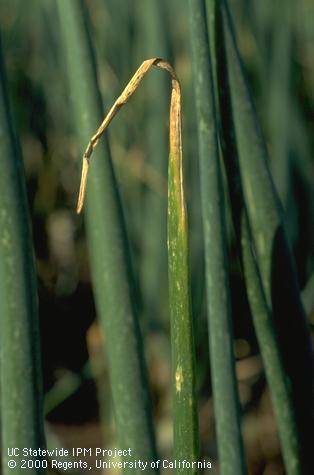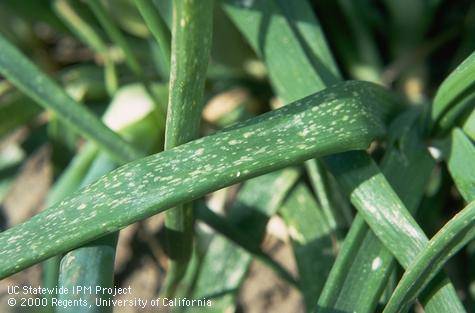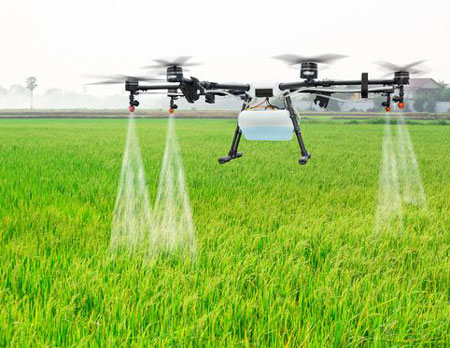Gralic
Botrytis Leaf Blight

Botrytis squamosa
Fungal Disease

Botrytis squamosa
Fungal Disease
Botrytis leaf blight, also known as Botrytis leaf spot, is a significant disease affecting onion crops. Here are key points to understand about this condition:
Initial Symptoms:
- The first sign of infection is the appearance of white, sunken spots on onion leaves.
- These spots are small and oval-shaped, typically measuring between 0.06 to 0.25 inch (0.5–6 mm) in length.
- They may feature a light-green halo and can appear water-soaked, with the surrounding epidermis sometimes having a silvery appearance.
Disease Progression:
- As the disease progresses, numerous spots can lead to dieback of leaf tips.
- In severely affected fields, plants may appear blighted, with many leaves dead and dried out.
- Premature leaf death can significantly reduce bulb size, resulting in yield losses.
Pathogen Characteristics:
- The disease is caused by the fungus Botrytis squamosa, which produces airborne spores that land on leaf surfaces.
- Upon contact with moisture, these spores germinate and secrete enzymes that kill the leaf tissue, causing the characteristic leaf spotting.
Environmental Conditions Favoring Development:
- Leaf surfaces must remain wet for 20 or more hours due to dew or rain for leaf spots to develop effectively.
- The optimal temperature for spore germination is around 15°C, while mycelial growth thrives in the mid-21s °C (around 24°C).
Survival Structures:
- The fungus can form survival structures known as sclerotia on infected tissues, which can persist in the soil for months or even years, posing a long-term threat to future crops.
Management Strategies:
- Maintaining good air circulation in the onion canopy is crucial in managing the disease.
- This can be achieved by avoiding overcrowding during planting and ensuring proper spacing away from trees or structures that might block air movement.




